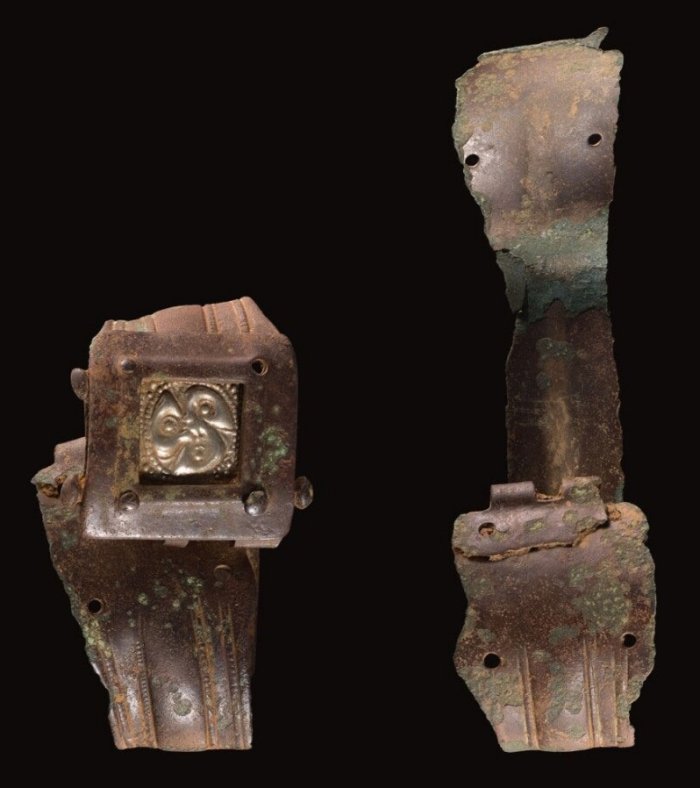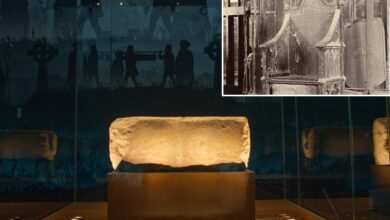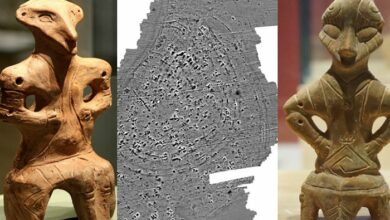Roman Treasure Decorated With A Triskelion Symbol Found On The Isle Of Anglesey

Jan Bartek – AncientPages.com – A pair of beautiful bracelets, now declared Roman treasure, has been discovered on the Isle of Anglesey, Wales, United Kingdom.
The two copper alloy bands (Treasure Case 23.68) were found by Andrew Hutchinson whilst metal detecting in Llanddyfnan Community.
Isle Of Anglesey. Credit: Adobe Stock – U-JINN Photography
Both bracelets are constructed from a strip of copper alloy, adorned with a wide central band and parallel grooves on both sides. Remnants of a hinge mechanism can be found on each bracelet, with the ends fashioned into tubes and incised, possibly to accommodate interlocking tabs. One bracelet retains a square silver plate. This silver plate has a raised triskele decoration, with the border around it filled with shallower dots.
Composed of three identical elements forming a triple spiral displaying rotational symmetry, the triskelion is a mysterious ancient symbol found in Christian, Buddhist, Islamic, and Jewish contexts.
Two Roman copper alloy bracelets found on the Isle of Anglesey. Credit: Museum Wales
The Triskelion is an ancient symbol that has endured for thousands of years. Its presence can be traced back to Neolithic art, demonstrating its deep historical roots. The oldest known artifact bearing this traditional symbol was found in Malta and is estimated to date back to 4400-3600 B.C.
The Triskele was assimilated into Celtic culture and is often seen in their artistry. This symbol is believed to signify perpetual motion or the concept of constantly moving forward. For the Celts, this encompassed physical, mental, and spiritual aspects. Furthermore, it represented eternal life, natural flow, and spiritual development.
The Celts held a belief that all occurrences are tripartite in nature. Evidence of this symbol can be traced back to Neolithic times around 3200 B.C. on kerbstones at Newgrange – further testament to its historical significance.
5,000-year-old triskelion discovered at Newgrange. Credit: Young Shanahan – CC BY 2.0
The bracelets discovered in Anglesey resemble in form and ornamentation the Roman strap bracelets unearthed in Conwy, Powys, and Plunton Castle, located in Dumfries and Galloway. Based on comparisons with associated artifacts, it is plausible to suggest that these bracelets originated around the 2nd century A.D.
Its presence on Roman artifacts from the 2nd century offers an intriguing perspective into how cultural exchange manifested during Britain’s occupation by Rome.
Amgueddfa Cymru, the Museum of Wales announced in a press release the Roman bracelets were declared treasure on Wednesday, 13th March, by H.M. Acting Coroner for North Wales (East & Central), Kate Robertson.
See also: More Archaeology News
As a treasure find, the bracelets were handed in to Sean Derby with Dyfed Archaeological Trust, before being taken in for identification and interpretation by expert curators from Amgueddfa Cymru – Museum Wales at National Museum Cardiff.
Written by Jan Bartek – AncientPages.com Staff Writer
Expand for references







